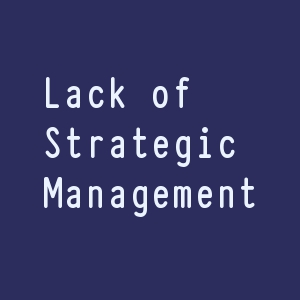The word ‘strategy’ comes from Greek strategies, which refers to a military general and combines stratus (the army) and ago (to lead). The concept and practice of strategy and planning started in the military, and, over time, it entered business and management.
The key or common objective of both business strategy and military strategy is the same, i.e., to secure competitive advantage over the rivals or opponents.
Evolving Definitions of Strategy
Chandler (1962): The determination of the basic long-term goals and objectives of an enterprise and the adoption of the courses of action and the allocation of resources necessary for carrying out these goals.
Andrews (1962): The pattern of objectives, purpose, goals and the major policies and plans for achieving these goals stated in such a way so as to define what business the company is or is to be and the kind of company it is or is to be.
Ansoff (1965): The common thread among the organization’s activities and product-markets … that defines the essential nature of business that the organization was or planned to be in future.
Glueck (1972): A unified, comprehensive and integrated plan designed to assure that the basic objectives of the enterprise are achieved.
Mintzberg (1987): A pattern in a stream of decisions and action.
Ansoff (1984): Basically, a strategy is a set of decision-making rules for the guidance of organizational behaviour.
Various levels of Organizational Strategy
Strategies exist at different levels in an organization. The following are three different levels of organizational strategy:
- Corporate-level
- Business unit-level
- Functional level
Corporate-level strategies are concerned with overall purpose or objective of the organization; for example, diversification through joint venture, merger or acquisition.
Business unit-level strategies address themselves to issues of a particular business unit or product group of an organization—strategies for product development and/or identification and exploitation of new market opportunities.
Functional strategies (sometimes, called operational strategies) concentrate on particular functional or operational areas like manufacturing, marketing, logistics, etc.
For single-business companies, corporate-level strategies and business unit-level strategies may not be much different. But for multi-business companies like Unilever (or its subsidiary Hindustan Unilever), business unit-level strategies would be quite distinct from corporate-level strategies.
Functional-level strategies, however, would be common in both single-business and multiple-business companies. The three levels of strategy are not isolated: these strategies support, complement or reinforce each other for the achievement of organizational objectives.





Comments-

(March 11, 2023 - 12:32 pm)
Kris Cragan
Hi I’ve loaded your blog in 3 different browsers and I must say this blog loads a lot faster then most. Kudos, I appreciate it!